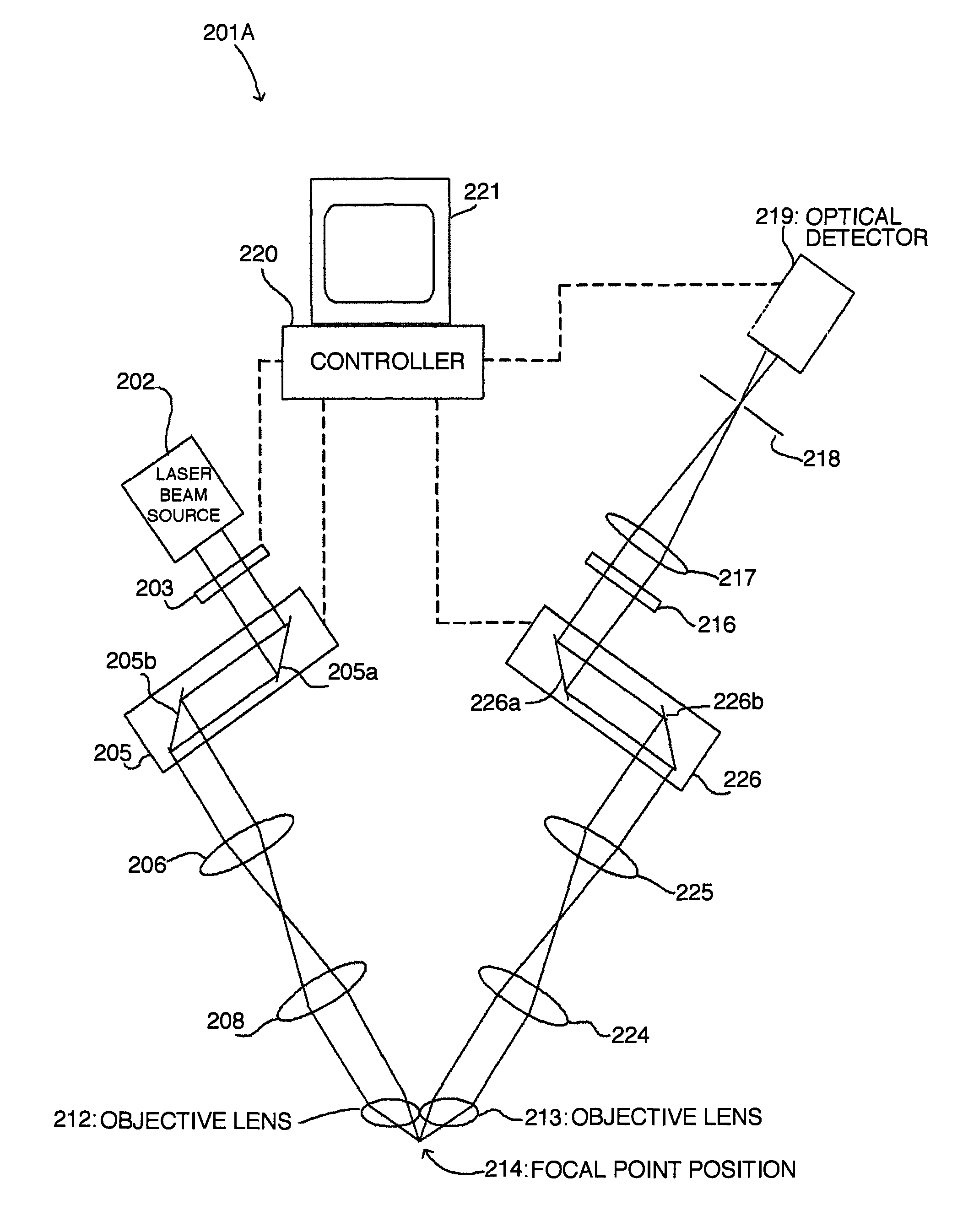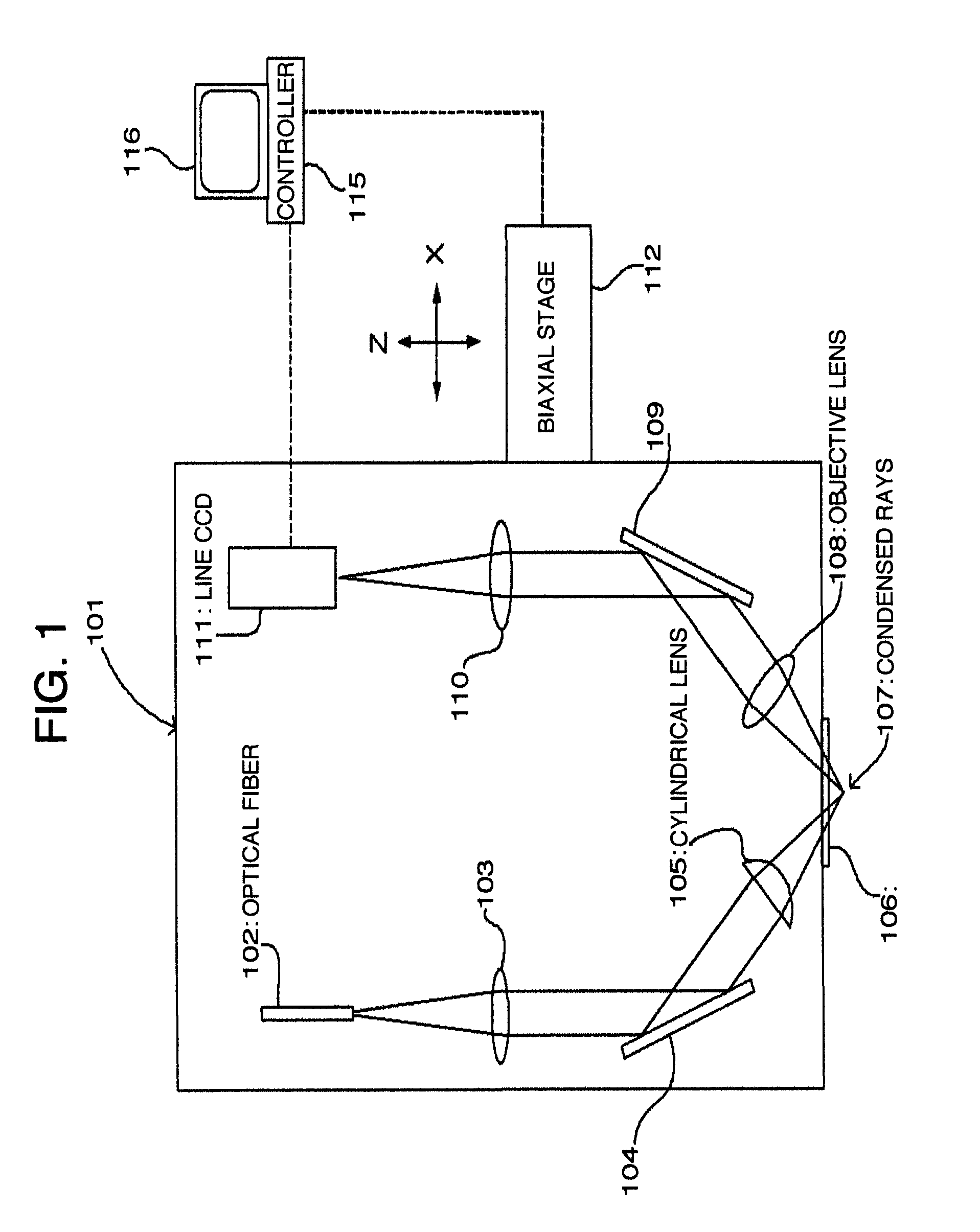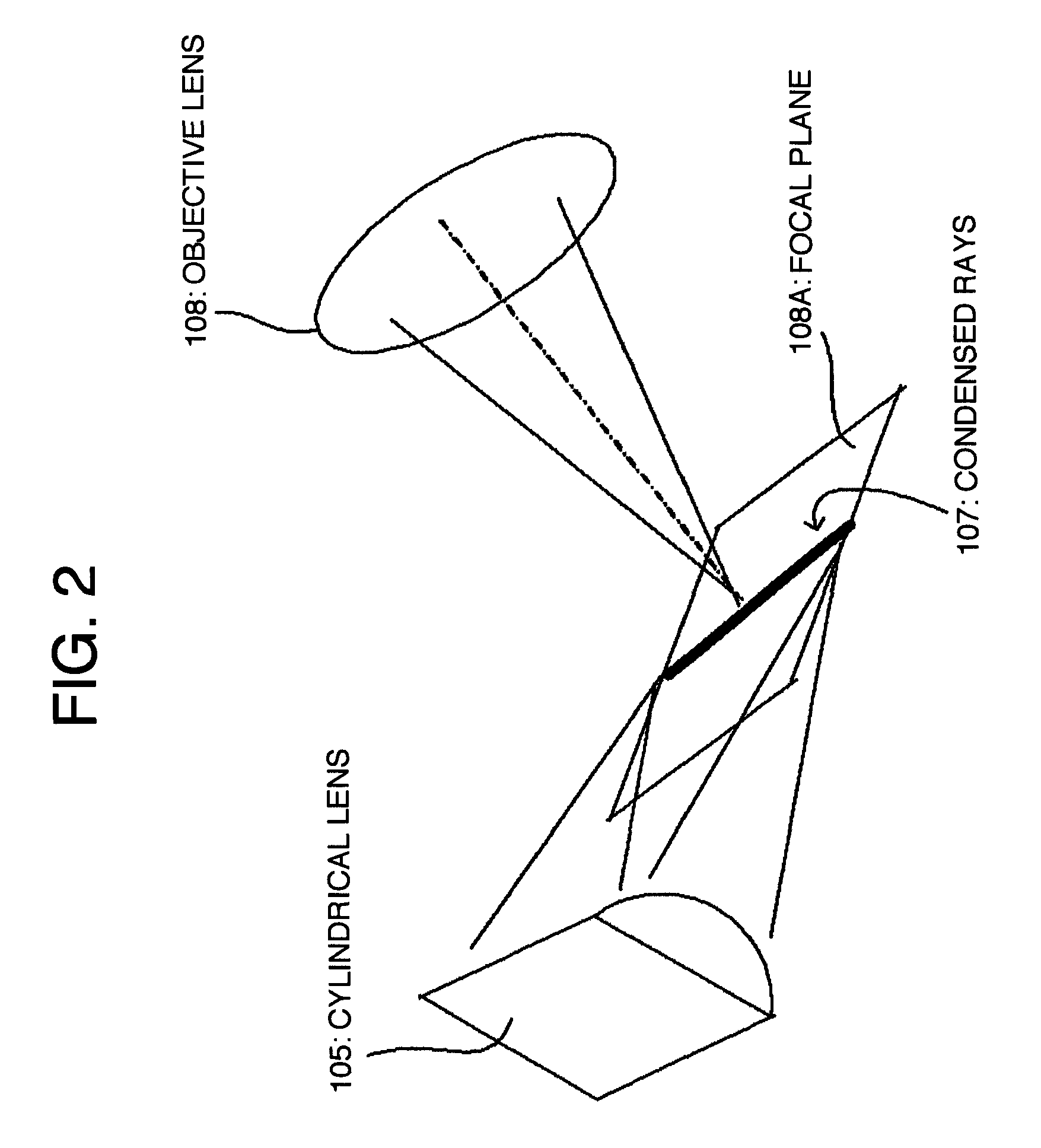Microscope device
a microscope and lens technology, applied in the field of microscope devices, can solve the problems of inability to cope with the desire to acquire information on a deeper level, long scanning time, and inability to scan in the field of depth, and achieve the effect of long scanning time, and easy scanning of illumination rays
- Summary
- Abstract
- Description
- Claims
- Application Information
AI Technical Summary
Benefits of technology
Problems solved by technology
Method used
Image
Examples
embodiment 1
[0123]A microscope device according to Embodiment 1 is described hereinafter with reference to FIGS. 1 to 3.
[0124]FIG. 1 is a block diagram showing a configuration of the microscope device according to Embodiment 1.
[0125]As shown in FIG. 1, an optical fiber 102 for guiding light rays from a light source (not shown) is disposed at an optical head 101 of the microscope device according to the present embodiment. In this case, near infrared rays for observation on a deep part of a living organism are preferable as the light rays from the light source, and the optical fiber 102 small in core diameter, such as a single-mode fiber, is preferable. A collimator lens 103 is provided in front of the optical fiber 102.
[0126]Further, the optical head 101 comprises a reflecting mirror 104, a cylindrical lens 105, an aperture window 106, an objective lens 108, a mirror 109, and an imaging lens 110, which are all disposed along an optical path.
[0127]The cylindrical lens 105 comprises a circular cy...
embodiment 2
[0146]A microscope device according to Embodiment 2 is described hereinafter with reference to FIGS. 4 to 6.
[0147]FIG. 4 is a block diagram showing a configuration of the microscope device according to Embodiment 2.
[0148]As shown in FIG. 4, an optical head 101A of the microscope device according to the present embodiment comprises an optical fiber 121 for guiding light rays from a light source (not shown), a collimator lens 122, a cylindrical lens 123, a slit 124 provided at a point of condensed light rays from the cylindrical lens 123, an imaging lens 125, reflecting mirrors 126, 127, and an objective lens 128, which are all disposed along an optical path of an illumination optical system.
[0149]Further, an objective lens 130 is disposed such that a focal point 129 of the objective lens 130, on a side thereof, adjacent to an object, will coincide with that of the objective lens 128. An angle between optical axes of the two objective lenses is 90°. For those objective lenses 128, 130...
embodiment 3
[0181]There is described hereinafter the microscope device according to Embodiment 3 with reference to FIGS. 7 to 9.
[0182]FIG. 7 is a block diagram showing a configuration of the microscope device according to Embodiment 3.
[0183]A microscope device 201 according to the present embodiment has a near infrared radiation (NIR) laser beam source 202, and an electric shutter 203 is disposed in front of the NIR laser beam source 202. Further, the microscope device 201 comprises a dichroic mirror 204 for altering orientation of a laser beam, and a scanning optical unit 205 for scanning the laser beam.
[0184]The dichroic mirror 204 has characteristics of reflecting the wavelength of the laser beam, and allowing fluorescent rays excited by the laser beam to transmit therethrough. The scanning optical unit 205 comprises a variable mirror 205a rotatable around a rotation axis, and a variable mirror 205b rotatable around an axis substantially orthogonal to the rotation axis of the variable mirror...
PUM
 Login to View More
Login to View More Abstract
Description
Claims
Application Information
 Login to View More
Login to View More - R&D
- Intellectual Property
- Life Sciences
- Materials
- Tech Scout
- Unparalleled Data Quality
- Higher Quality Content
- 60% Fewer Hallucinations
Browse by: Latest US Patents, China's latest patents, Technical Efficacy Thesaurus, Application Domain, Technology Topic, Popular Technical Reports.
© 2025 PatSnap. All rights reserved.Legal|Privacy policy|Modern Slavery Act Transparency Statement|Sitemap|About US| Contact US: help@patsnap.com



